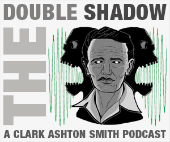Note: the Eldritch Icons Series was originally published elsewhere but now only exist on the Arkham Archivist.
One of the beauties of 13th Age is that it comes with a fully-fleshed setting, the Dragon Empire, with 13 icons who provide compelling forces in your campaign. However, those icons, and even the empire and world itself, are not necessary aspects of a 13th Age game. Players are encouraged to take the rules into any fantasy or other setting. But what does one then do about the icons? In their FAQ, the designers encourage shifting settings and icons to fit the needs of your game:
We based them on common fantasy archetypes, so if there's an emperor (or high king), an archmage, an undead villain, a king of the dwarves, a queen of the elves, a lord of thieves, you can easily adapt the icons presented in the game to the setting.
If that setting does not have very powerful individuals in it, determine which influential NPCs will figure into the characters’ adventures, and use them as icons. If the powerful forces in the world are organizations rather than individuals, have those factions, city-states, cults or whatever be the icons.
Besides encouraging players to reskin the game, they'll be publishing other settings and takes on the Dragon Empire. One of the supplements I'm looking forward to is Kenneth Hite's upcoming Sword and Mythos books, which will give both Lovecraftian/Smithian Terran adaptations of 13th Age rules and provide a pre-13th Age Lovecraftian take on the land that would become the Dragon Empire. Hite wrote up iconic ideas in a post on Pelgrane last summer.
While I like where Hite's going with things, I want to do my own somewhat more Smithian take on iconic relationships and the world. At this point, I'm flirting with both his Dying Earth style and full-on deities/wizards/enchantresses in conflict with the icons of the 13th Age. I think it's important to look more to the writings of Clark Ashton Smith for icons (although I'd also include some of the same Lovecraftian entities Hite does and he includes a few Smithian ones).
The Problem With Lovecraftian Gaming and Icons
In Lovecraft's the penetration of even the smallest force of a Lovecraftian deity is seen as a cataclysmic event. The closest we get to having creatures that live among us in our era are Dagon and Yig (rarely on the surface), Nyarlathotep (who pops in and out), and Cthulhu (but dreaming). We don't knowingly coexist with them—it's enough to drive us mad when we find out.
Most Lovecraftian gaming is handled in a similar fashion. You're trying to stop whatever this is before it even gets started. Your investigators may be sealing gates before the Great Old One rises, they may travel on the Orient Express to stop a chain of horrifying events, they may be in a one-shot where they take down a cult attempting to raise Cthulhu, but they're generally not on a world where not just one but 13 Lovecraftian deities hold sway.
A notable exception to this is CthulhuTech, which I own but haven't yet played. In it, humans are engaged in a pitched struggle against invading Mi-Go, Dagon cultists, and/or Hastur's cultists, depending on how they pick characters and structure their campaign. It feels like a couple of Cthulhu games rolled into one, but each is a fight for the planet. Things haven't quite settled enough for icons to arise. There is no detente.
What Smithian Gaming Offers
Smith and Lovecraft were correspondents who created worlds and gods together. In one of their letters, Lovecraft creates a family tree relating their gods. But the way they write their stories is very different. Most of Lovecraft's tales are set in the fairly modern world of the 1920s/30s, with flashbacks that may go as far back as the 17th century. Smith, on the other hand, wrote of people living in eras when Hyperborea was green and before Atlantis sank. He wrote of near future when humans travel to Mars and the far future when our planet had become the dying Zothique. And Smith wrote a handful of tales set in his own time, but those did not feature humans coexisting with gods.
In Hyperborea, on the other hand, we see humans living in cities while the Voormis servitors of Tsathoggua live in caves on Mount Voormithadreth, while deep inside:
abides from eldermost eons the god Tsathoggua. You shall know Tsathoggua by his great girth and his batlike furriness and the look of a sleepy black toad which he has eternally. He will rise not from his place, even in the ravening of hunger, but will wait in divine slothfulness for the sacrifice. — “The Seven Geases”
In “The Door to Saturn,” many Hyperboreans worship the elk-goddess Yhoundeh, to whom Lin Carter mysteriously tied Nyarlathotep. Yhoundeh appears to be a fairly benign goddess, although her priests’ inquisitorial fervor provides excellent plot material.
In Zothique, we have the story of “The Charnel God” Mordiggian, the great Ghoul, and his jackal-headed priests. A priest reassures a traveler that “Mordiggian is a just god, who claims only the dead, and has no concern with the living.”
This is not great Cthulhu rising in the sea to bring “fright and frenzy” to the world.
Smith's worlds are also full of powerful necromancers and enchantresses who might serve to take on iconic roles. We see them holding sway in cities or regions who pay them tribute and accept protection in return, or who live in fear, or who accept their blessings.
In sum, Smith offers us worlds full of iconic figures and examples of entire societies carrying on beside them. I'll be posting more here about my attempts and explorations and I hope to do a book review of Hite's when it comes out. I expect I'll enjoy it very much.


